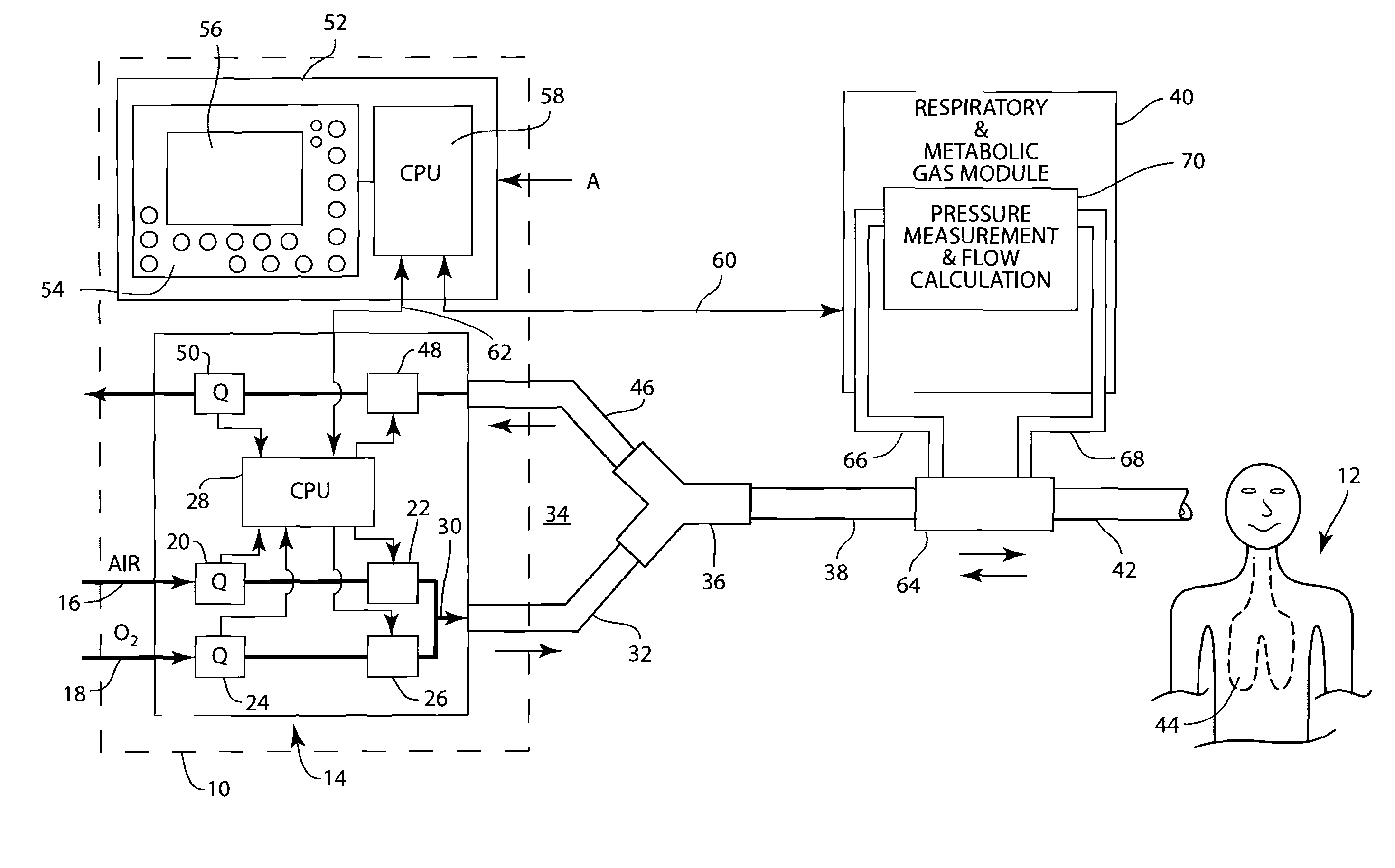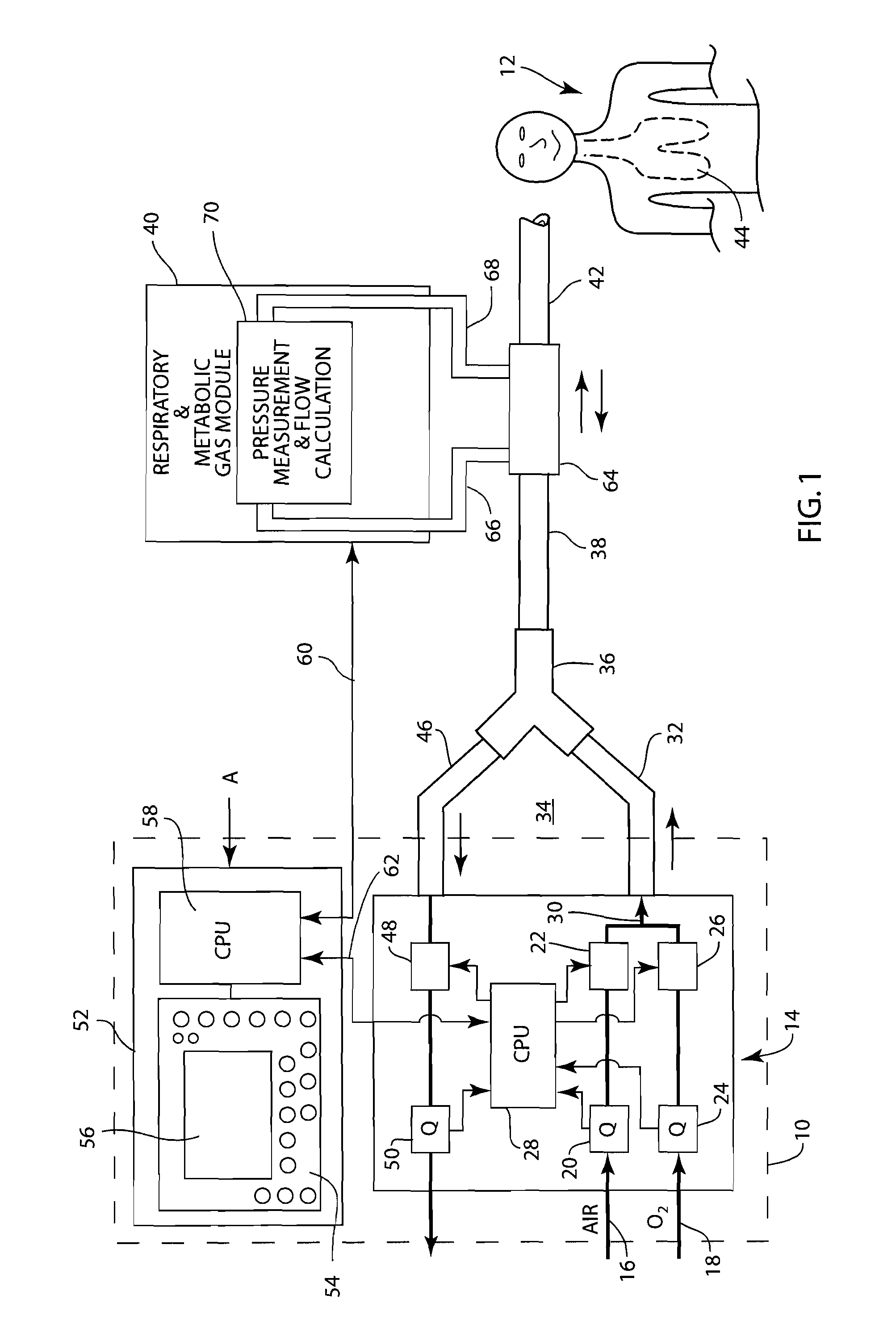Method and apparatus for airway compensation control
a compensation control and airway technology, applied in the field of mechanical ventilation, can solve the problems of inability to provide an indication, inability to provide a method or system, and inability to complete the pneumatic seal, etc., and achieve the effect of measuring the resistance of the endotracheal tub
- Summary
- Abstract
- Description
- Claims
- Application Information
AI Technical Summary
Problems solved by technology
Method used
Image
Examples
Embodiment Construction
[0019]FIG. 1 depicts a schematic diagram of a mechanical ventilator system 10 set up according to an embodiment of the present invention to provide respiratory support to a patient 12. A ventilator system 10 comprises a mechanical ventilator 14 that performs the mechanical and pneumatic functions of the ventilator system 10 for providing respiratory support to the patient 12. The mechanical ventilator 14 receives medical gas in the form of air 16 but may also receive a supplemental gas such as oxygen 18. The air that is supplied to the patient 12 is regulated by a flow sensor 20 and a control valve 22. Similarly, the supplemental gas 18 is controlled by flow sensor 24 and control valve 26. A controller 28, which may comprise a microprocessor or a CPU, receives flow rates measured by the flow sensors 20 and 24 and controls the amounts of the medical gases 16 and 18 to be delivered to the patient 12 by regulating the control valves 22 and 26.
[0020]The term medical gas is used to refer...
PUM
 Login to View More
Login to View More Abstract
Description
Claims
Application Information
 Login to View More
Login to View More - R&D
- Intellectual Property
- Life Sciences
- Materials
- Tech Scout
- Unparalleled Data Quality
- Higher Quality Content
- 60% Fewer Hallucinations
Browse by: Latest US Patents, China's latest patents, Technical Efficacy Thesaurus, Application Domain, Technology Topic, Popular Technical Reports.
© 2025 PatSnap. All rights reserved.Legal|Privacy policy|Modern Slavery Act Transparency Statement|Sitemap|About US| Contact US: help@patsnap.com



